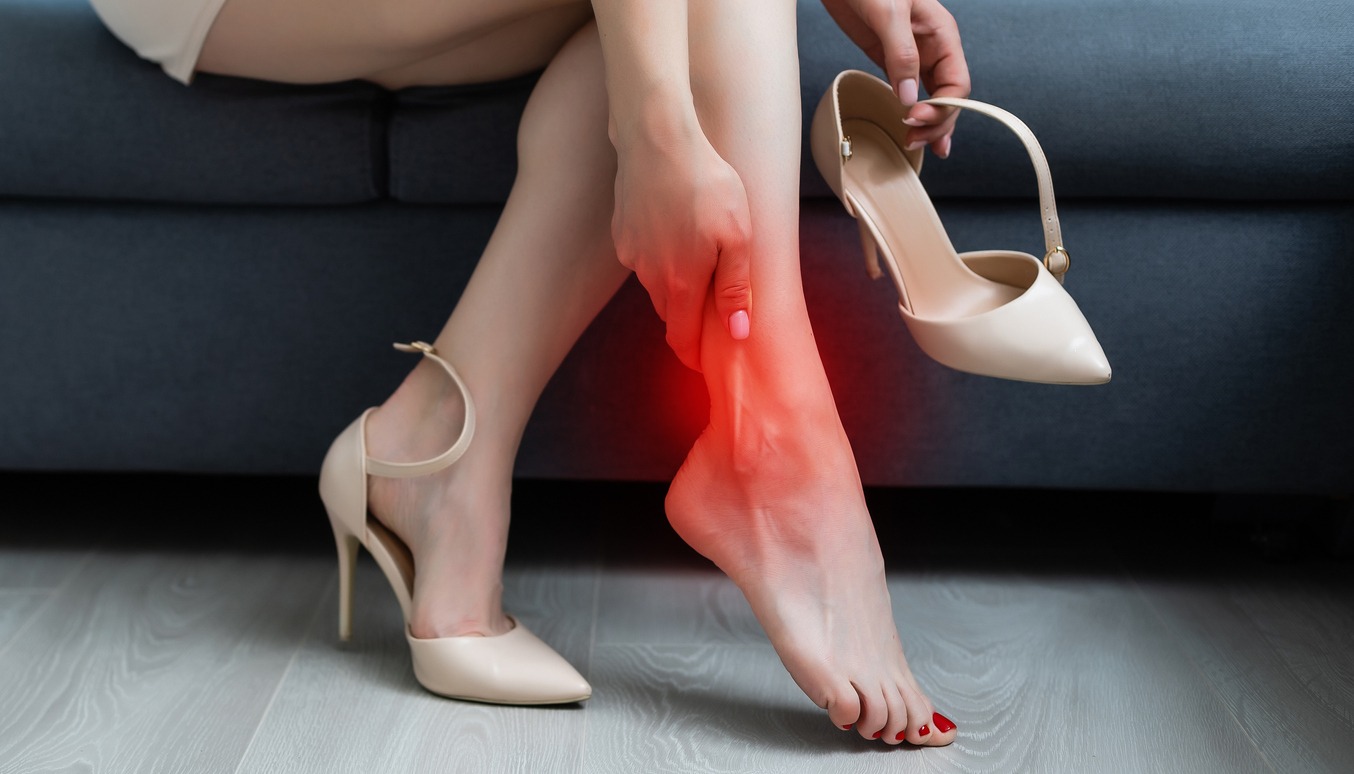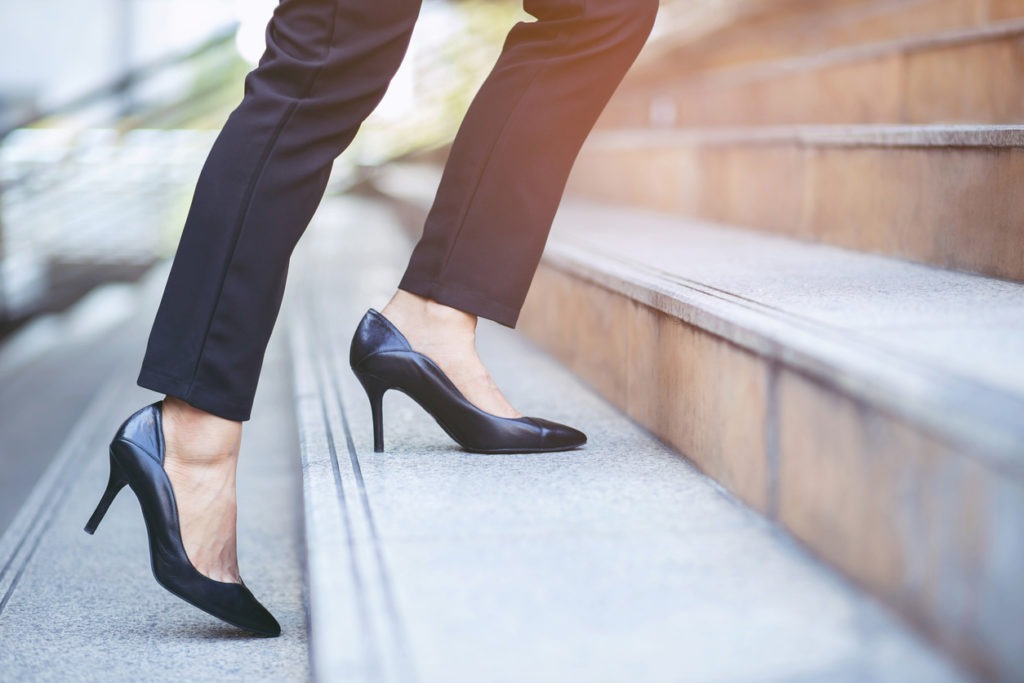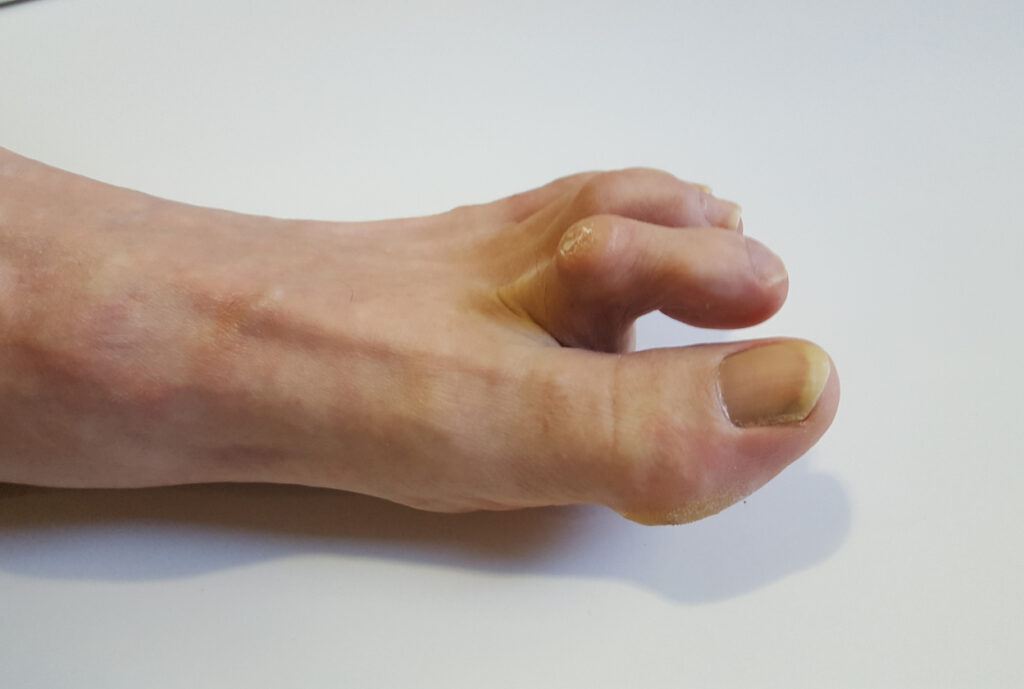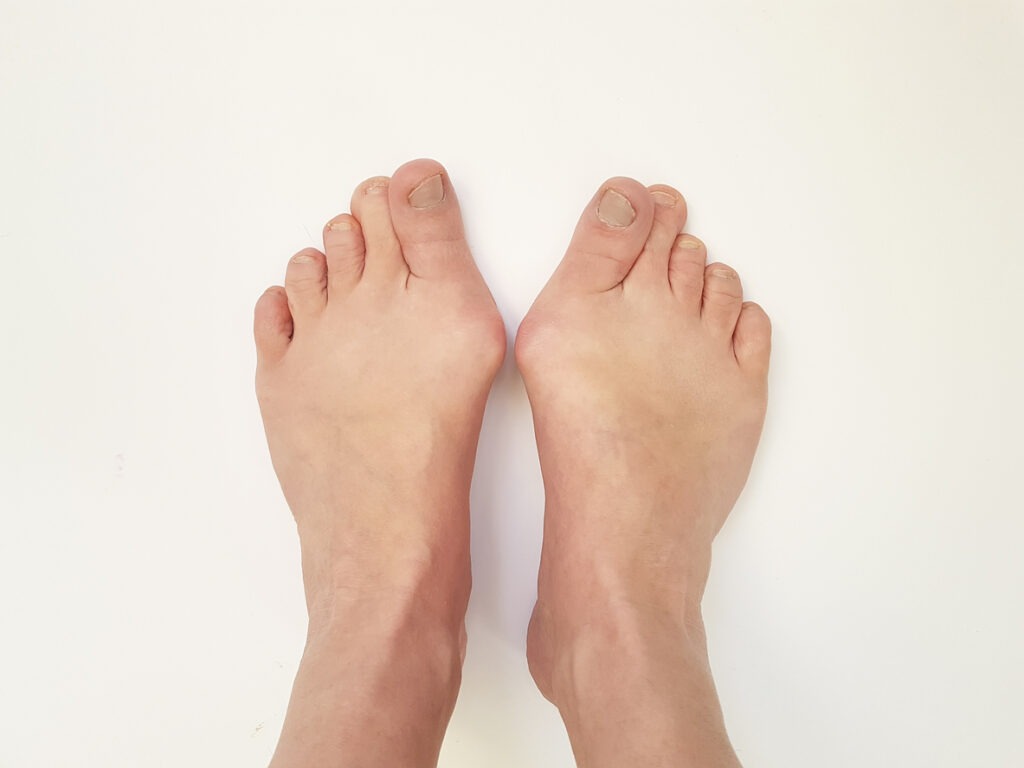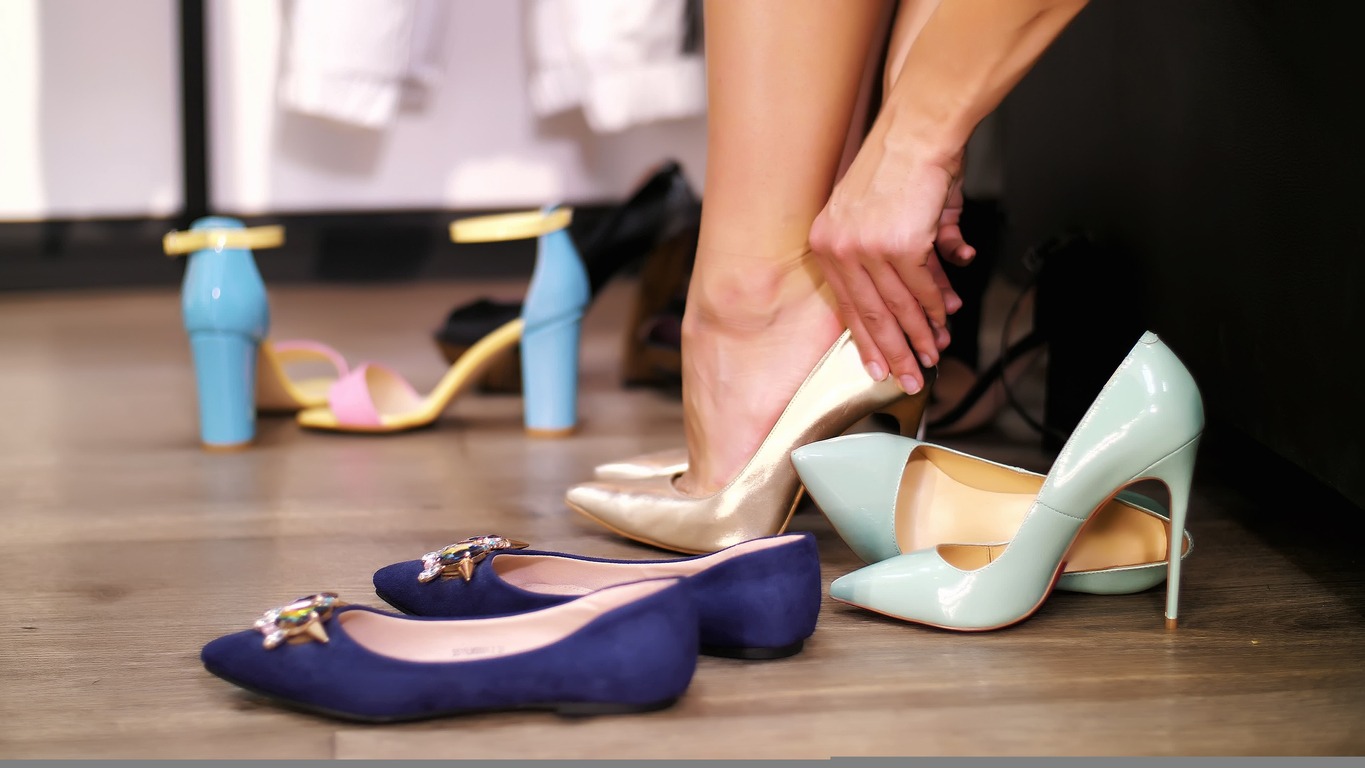High-heeled shoes, more commonly known as high heels, are one of the most fashionable pairs of shoes to wear for many women. While high heels do look elegant while also adding a little bit of height to women, they can also be quite painful to wear. In fact, high-heeled shoes may also cause several problems on your feet if you wear them for long periods of time. To know more about the drawbacks of wearing high heel shoes, let us get into the details of how bad for your feet these shoes are.
The Problem with Wearing High Heels
There is no denying that high heels look amazing on feet, but they can give you a lot of foot-related problems if you wear them every day or most of the time outdoors. When you first wear a pair of high heel shoes, you will already feel the problems that may arise from wearing them a lot.
One of the first problems that you will notice is how difficult it is to walk in high heels, as your heels are high off the ground, making it challenging to balance your lower body. Because of how high your heels are, most of the pressure will go to your forefoot, which would then cause a lot of pain in your soles and toes.
The Biggest Effects of High Heel Shoes
High heel shoes, as we have mentioned previously, can cause many problems for your feet, and in this segment, we will talk about those problems in detail. So, without further ado, here are the biggest effects of wearing high heel shoes for long periods of time.
Plantar Fasciitis
One of the biggest problems that may arise whenever you wear high heels for a long time is plantar fasciitis. This disorder occurs in the plantar fascia, which is the connective tissue in the soles of your feet that serve as support for the feet’s arches. When you have plantar fasciitis, your heels and the middle portion of your soles will hurt a lot, and the pain and discomfort may sometimes be debilitating, especially when you are wearing heels while walking or standing.
There are many causes of plantar fasciitis, but one of the most common causes is wearing ill-fitting shoes and shoes that don’t apply equal pressure on all sections of your feet, which is what high heel shoes do. The pain you get from plantar fasciitis would often be severe, as the plantar fascia constantly flexes as it struggles to provide support for the soles of your feet. Fortunately, plantar fasciitis can be treated simply through massage and gentle stretches, although you shouldn’t wear heels during the healing process.
In addition to wearing more comfortable shoes, there are also other ways to alleviate the symptoms of plantar fasciitis, which you can learn more about in our Guide to Selecting Essential Foot Products for Plantar Fasciitis.
Hammer Toes
Hammer toes, also known as contracted toe, is a deformity on the toes wherein they are folded or bent upwards on the proximal interphalangeal joints. The permanent bending of the toes makes them look like small hammers, hence the name of the deformity. [1]
Hammer toes are often caused by shoes or any type of footwear that forces the toes to be bunched upwards. Shoes that are too small for the feet and heels that force your slide downward can cause hammers. For heels, they can cause hammer toe when your heel and midfoot are high off the ground, and a lot of pressure is placed on the forefoot, and this pressure eventually weakens the joints in your toes.
Unlike plantar fasciitis, hammer toes cannot be treated through regular massages and stretches. The deformity can be lessened through physical therapy and wearing shoes that have spacious toe boxes to allow your toes to stretch and move around freely. If the deformity is too severe, then you may need to get surgery to fix the joints of your toes.
Bunions
If you are wearing closed heels, which are a type of high heel shoes that cover your toes, then there is a high chance that you will get bunions. In case you don’t know, bunions are a deformity in the biggest toe wherein the joint that connects it to the foot forces the toe to bend towards the other toes. The joint continually deforms until it has a bump on its side that is swollen and painful. [2]
Closed high heel shoes can cause bunions because the forefoot is so narrow, so your biggest toes are forced to bend towards the other toes for each foot. In order to prevent getting bunions, you should avoid shoes that have narrow toe boxes, and these include high heel shoes with a closed forefoot section. If you have already developed bunions, then it would be best if you get surgery that can get rid of the bump on the affected joints.
What to Avoid When Wearing High Heel Shoes
In some situations, you wouldn’t really be able to avoid wearing high heels. So, in order to have a more comfortable and less painful time wearing high heels, you should avoid certain factors that can cause pain and discomfort on your feet. Here are the things to avoid when wearing high heel shoes.
Incorrect Size
Wearing the wrong size of shoes can be very painful for your feet, regardless if they are too loose or too tight. So, it is very important to get the correct size of shoes so that they would be more comfortable to wear while not causing a lot of pain. The only way to get the correct size of high heel shoes is to try them on in person and walk around in them for a few minutes before deciding if you want to buy them.
Low-Quality Materials
The materials used on high heels shoes are also very important, as they would determine how soft and comfortable the shoes are on the wearer’s feet. The high heel shoes should have high-quality materials so that it is softer and more flexible compared to shoes that have low-quality materials. Never settle for affordable heels that have cheap materials, as they would just cause you a lot of pain, and they also wouldn’t last long.
Wearing Heels for a Long Time
If it is possible, you shouldn’t be wearing high heel shoes for a long time, as this practice can be damaging to your feet no matter if the pair is the correct size and if they are made from high-quality materials. If you need to wear high heels for work, then it would be best to have a pair of slides or flat shoes so that you can wear those instead during breaks or while traveling to work.
And these are the things that you should know about high heels and why they are bad for your feet most of the time. Know what to avoid when wearing high heels and learn how to treat numerous complications or problems that may arise if you have no choice but to wear heels for a long time at work.
If you always wear heels to work, it is important that you give your feet a break, such as giving them some foot massage. You may read our article about the Types of Foot Massagers if you want to know what options are available for you.
References
[1] Watson, Anthony. (2021, January 29). Hammertoe Deformity. Medscape. Retrieved January 23, 2023, from https://emedicine.medscape.com/article/1235341-overview
[2] Cleveland Clinic. (2020, December 10). Bunions (Hallux Valgus). Cleveland Clinic. Retrieved January 23, 2023, from https://my.clevelandclinic.org/health/diseases/14386-bunions-hallux-valgus

